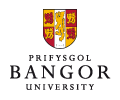- Home Page
- General Overview
- Group Members
- Current Members
Recent Members - Publications
- Recent Papers
Complete List
Nucleotide Sequences - Links Pool
- Biodegradation Related
Sequence Retrieval
Biological Science Journals
Freeware & Shareware
Useful Molecular Biology Homepages
Molecular Biological Companies - Contact Details
- School of Biological Sciences

Bangor Biodegradation Group
Welcome to Bangor Biodegradation Group
Biodegradation Research at Bangor under Peter Williams
The School of Biological Sciences (SBS) at Bangor has one of the longest standing continuous research records in Europe on the microbial catabolism of aromatic compounds, going back to 1952 when one of the major pioneers in the field, Professor W.Charles Evans FRS, was appointed to the newly formed Chair of Agricultural Biochemistry.
Current research on aromatic catabolism is concentrated within the group of Professor Peter Williams who, after graduating with a B.A. in Chemistry and a D.Phil. from the University of Oxford, was originally appointed as a lecturer in Bangor in 1966 by Charles Evans. Evans' research on the pathways of microbial degradation of aromatics was the inspiration for a total change of research direction from physical biochemistry to microbial biochemistry.
Research in the two laboratories ran in parallel until Evans' retirement in 1979 although, whereas in the latter stages of his career Evans was more interested in the pathways of anaerobic degradation, research in Williams' laboratory turned towards the genetics and molecular biology of aerobic processes following their discovery of the TOL plasmid in 1974. Since then the research has encompassed a wide range of substrates, of pathways and of microbial degraders. Perhaps more importantly, it has spanned one of the most exciting periods in biological research, the development of DNA-based molecular biology. In the 1970s research in biodegradation was able to encompass only the elucidation of the metabolic pathways and, to a lesser extent, the characterization of the enzymes. Today the developments in molecular biology have enabled the current explosion in the depth of investigation to the level of gene sequences, regulatory complexity, horizontal gene transfer etc. A substantial part of research in Bangor has concentrated on plasmid-encoded catabolism in Pseudomonas particularly involving the TOL plasmids. These are a group of large plasmids (from 100-300 kb) encoding the degradation of the monocylclic aromatic hydrocarbons toluene and m- and p-xylenes. The archetype of this group is the 117 kb plasmid pWW0 from P.putida mt-2 which was first identified in Bangor. Its xyl genes, encoding the catabolism of the hydrocarbons, span some 25 kb, are organised in two operons and their expression is controlled by two regulatory genes, xylS and xylR. The complete xyl genes are arguably are the best studied of any long catabolic pathway and the TOL plasmids, in particular pWW0, have been the subject of a considerable body of literature.
The group's current research interests focus on the molecular biology and biochemistry of the degradation of toluene, xylenes, naphthalene, nitro-substituted aromatics and aromatic esters by a range of bacteria including fluorescent Pseudomonas spp., Ralstonia spp., Acinetobacter spp., acidophiles and bacteria from Antarctica. A recent collaboration with Dr. D. B. Johnson in the Bangor Acidophile Research Team has characterized a novel class of acidophilic bacterial degraders which might be able to participate in a process to clean up mixed industrial wastes containing both organic and toxic inorganic pollutants.
In particular we are interested in the genes encoding the catabolic functions, their organisation and their regulation. Knowledge of these enables us to understand better how bacteria can rapidly evolve the ability to degrade xenobiotic compounds (i.e. those of non-biological origin). It also enables genetic manipulation of the pathways either to allow the use of bacteria for accumulation of fine chemicals or for maximising bioremediative processes for pollution control.
Currently Peter Williams is in the second year of a five-year term as an Editor of Applied and Environmental Microbiology and handles many of the submitted papers on biodegradation and also papers on microbial molecular biology, ecology and enzymology. To make contact on any topic related to papers you have submitted and which I am handling, please make contact via asm.office@bangor.ac.uk where your enquiry will be handled by myself or Sally Wells, my very capable Editorial Assistant.
Go to this link for a more general overview of the role of microbes as the most effective environmental clean-up agents and some general reading.


